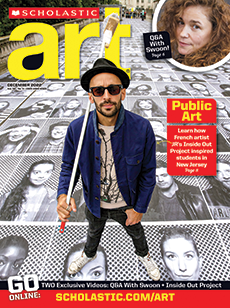Many artists make decisions about composition while they create an artwork. For instance, a painter might decide in the moment what shape to make a brushstroke or how bright to make a highlight. Sol LeWitt made all of his decisions before even starting one of his wall drawings. At the time, this was a new idea in art. In the works shown here, you can see how LeWitt developed one of his geometric concepts—and how other artists interpreted it. How does LeWitt’s idea transform over time?
Artists often make decisions while they work. A painter might choose what shape to make a brushstroke or what color paint to use. Sol LeWitt made all of his decisions about a composition before he started a wall drawing. At the time, this was a new way of art-making. In the works shown here, you can see how LeWitt developed one of his ideas and how other artists interpreted it. How does LeWitt’s idea change over time?
